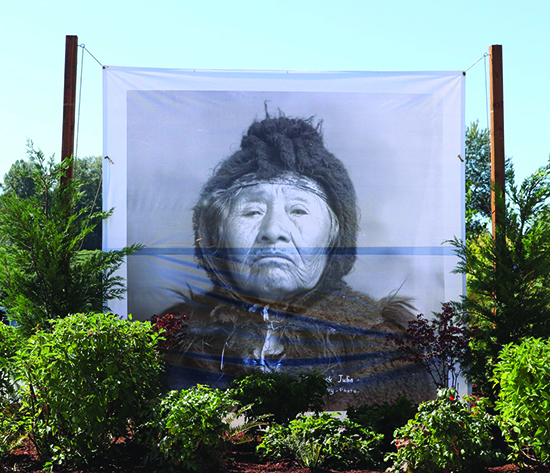
By Kalvin Valdillez, Tulalip News
“There was not a stronger woman than Pilchuck Julia,” expressed Tulalip Natural Resources Special Project Manager and Tribal member, Patti Gobin. “To me she exemplifies a true Sduhubš, or Snohomish, woman who we all descend from. We believe that when you speak the name of Pilchuck Julia, even though that was not her traditional name, that she’s here with us. From this day forward she’s going to be here, amongst us forevermore because we are honoring her in this special way.”
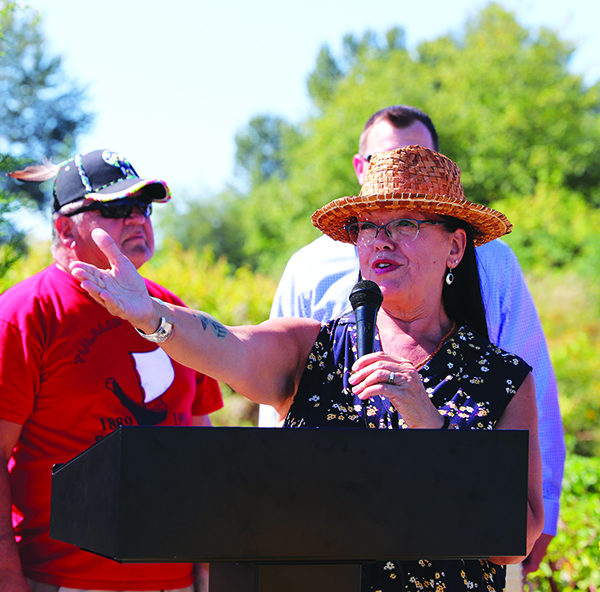
A historical Native woman was commemorated in the town of Snohomish on August 27, during the naming ceremony of the Pilchuck Julia Landing. Snohomish community members and Tulalip tribal leaders gathered at a boat launch on the Snohomish River on the warm summer afternoon. Tulalips sang the Welcome Song in front of a large black and white photo of Pilchuck Julia, a woman who has significant, historical and influential ties to both the town of Snohomish, as well as the direct descendants of the Snohomish people.
“This site is a little over nineteen acres, we called it the twenty-acre boat launch before, now it’s officially Pilchuck Julia Landing,” exclaimed Snohomish City Council Member, Linda Redmon. “We had a number of parks that needed to be named in the city and we went to the community to ask what they wanted to name the parks. And the overwhelming consensus was that they wanted to name this park after Pilchuck Julia.”
Pilchuck Julia’s memory is a favorite story amongst the citizens of Snohomish. Born circa 1840, she lived her life on the banks of the Pilchuck River, both in her adolescence and adult life, after marrying her husband Pilchuck Jack. In her teenage years, she witnessed the signing of the 1855 Treaty of Point Elliot. And during her elder years, she was beloved by the Snohomish community, known for walking about the town selling salmon and shellfish to support her family after her husband’s life was claimed by smallpox and her son passed away following a falling accident.
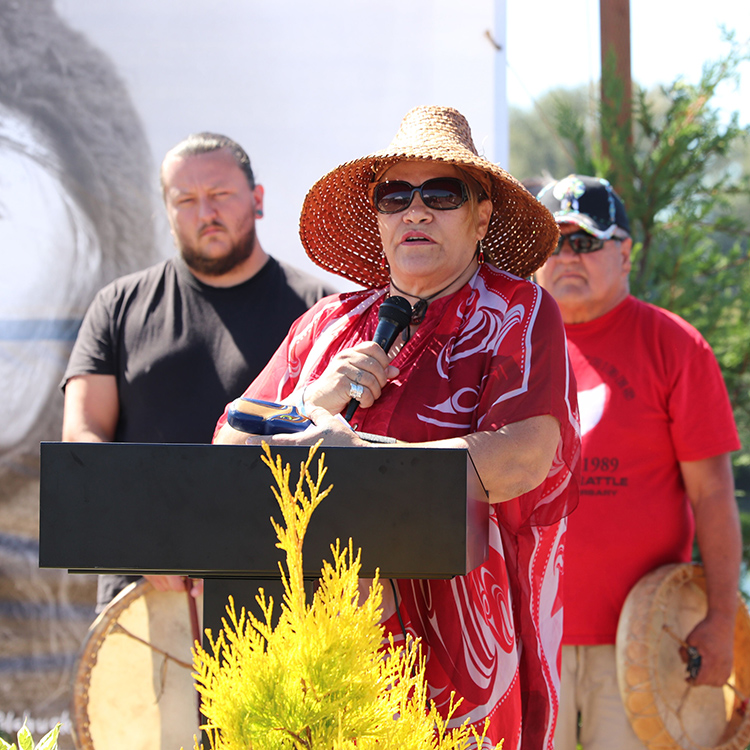
“Pilchuck Julia lived in a time when it wasn’t easy to be an Indian woman in a non-Indian community,” said Tulalip Tribes Chairwoman, Teri Gobin. “She made great strides to make friends with the people of the community, people of all nations. The times were tough back then and even tougher for an Indian woman who was alone, but she made great strides in the community, the predicting of the weather to making those friends. She made a beautiful day for us today to honor her, one of our ancestors.”
Some believed Pilchuck Julia was a traditional meteorologist and could predict the forecast after she warned the citizens about an upcoming snow storm in 1917. Perhaps it was because she was in tune with the land and waterways due to her ancestral teachings, but Julia’s predictions were often reported to be right on the nose and were featured in a number of newspapers in order to reach a large audience of local farmers.
Pilchuck Julia was also quite the icon of her time. She was often photographed, depicting the strong Indigenous woman she was, in photos that were shared in publications and on post cards around the nation. At the naming ceremony of the boat launch, Pilchuck Julia’s great, great descendants Celum and Shelbi Hatch proudly posed for a picture with Julia’s image in the background, agreeing that they should recreate her infamous ‘stoic’ pose.
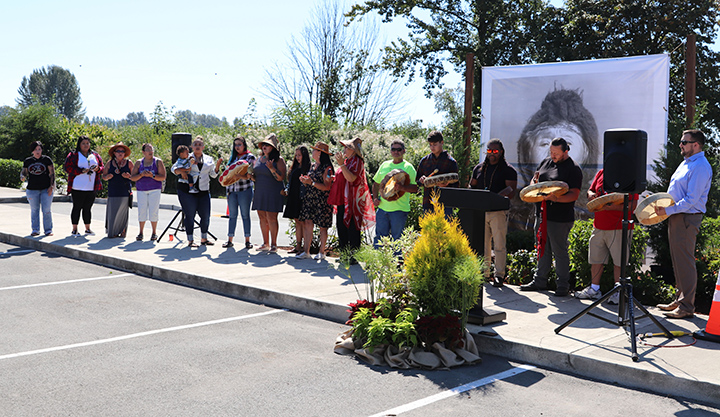
The idea to name the landing after Julia was well received throughout the city of Snohomish and by reaching out to Tulalip, the sentiment helped further strengthen a well-established connection between the Tribal government and the city. The Tribe and Snohomish City Council worked together to immortalize Pilchuck Julia’s legacy in an area she called home for generations, pre and post-colonization.
“Where we’re at right now is just above the confluence of the Snohomish and Pilchuck Rivers, which are two of the main rivers in the Sduhubš territory,” explained Ryan Miller, Tulalip Natural Resources Environmental Liaison and descendant of Pilchuck Julia. “Right now we’re standing in place where Pilchuck Julia spent the majority of her life and this is ground that will certainly recognize her.
“We’ve been talking with the City Council of Snohomish as well as some of the citizens of the town for about nine months,” he continued. “The Tribe has been lucky enough to have a good relationship with the town of Snohomish for quite some time and it’s continuing to build. The town of Snohomish gifted us the property where the Pilchuck Dam is, that we are now working to remove to open up thirty-seven miles of habitat for salmon above that dam.”
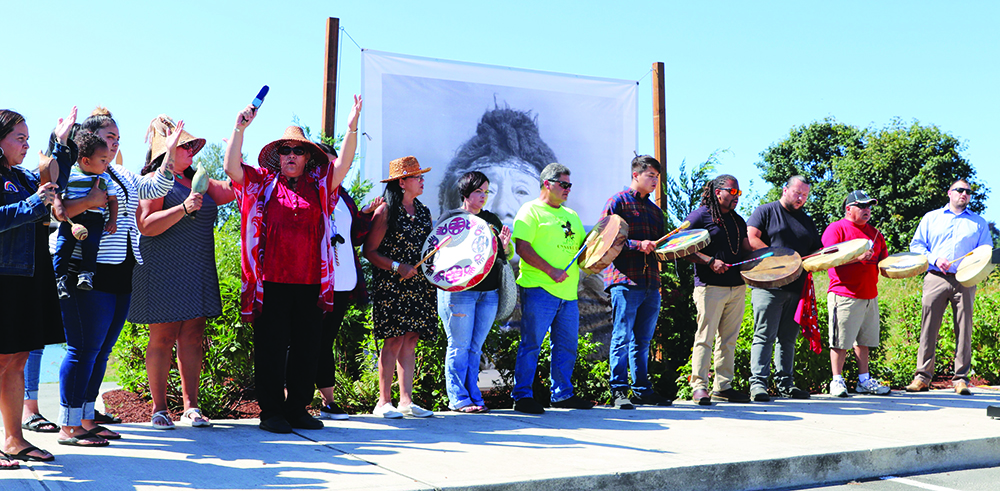
The City of Snohomish is currently working with the Tulalip Tribes to gain additional knowledge of Pilchuck Julia’s life and times from her family members. Together, the city and Tribe will write the verbiage to post on interpretive signage at the landing site that shares the story of Pilchuck Julia.
“This is one of those things that’s so special,” said Ryan. “I don’t think there’s a lot of places in this country where towns are willing to do stuff like this, to think about naming a place after someone who was part of the original inhabitants of this land. Julia represents, to all of the Tribal members, our grandmother, our great grandmother. She is to us what Sduhubš is, what a Coast Salish woman is. I think it’s amazing the City of Snohomish was willing to do that and to do it in the right way, by contacting the Tribe and making sure it was okay with us, respecting our process and having us here to sing some songs to let Julia know we are here.”
Pilchuck Julia Landing is located at 20 Lincoln Ave, Snohomish, WA 98290.